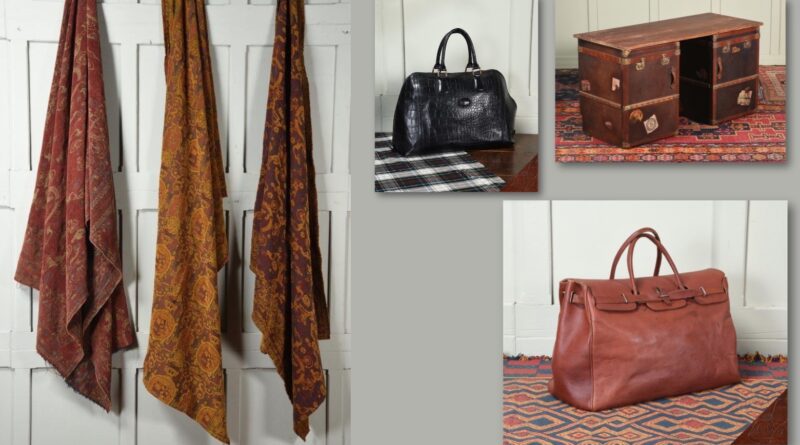Mulberry founder Roger Saul’s archive at Dreweatts
The private archive of Roger Saul, the creator of Mulberry, the coveted British brand that spans over 50 years of design, will go under the hammer at Dreweatts in Berkshire this summer.
The archive will include early and never before seen design samples, personal memorabilia, as well as iconic classics across all the Mulberry ranges, from the iconic handbags and fashion, to luggage and homewares. The archive will be offered in a special auction on August 7.

This sale will be a celebration of Roger’s 42 years in devising, building and evolving the Mulberry label and will offer an insight in to the building of one of the most popular brand names in the UK and beyond.
Among the highlights of the sale is a Mulberry chestnut girthgrain, leather holdall, designed by Roger in 1975. In 2001, Mulberry was approached by Luella Bartley, a young fashion designer and former journalist, to create a bag in her name, Roger took her to his archive museum and she fell in love with the bag he had designed back in 1975. At her 2001 fashion show in New York, model Gisele Bundchen carried it along the runway and walked off at the end saying: “this is mine!” It was known thereafter as the Gisele and was the basis of the succession of ‘IT’ bags that were created in the early 2000’s.

The Late Diana, Princess of Wales was another big fan of the brand and the sale includes two items from Mulberry’s collections similar to those she purchased and wore – a Mulberry waxed cotton leather drover coat and a Mulberry pleated silk floral skirt.
Other highlights include Mulberry leather belts, a Mulberry Home walnut and paisley upholstered armchair in Victorian style, Kate Winslet’s Mulberry check boucle wool jacket, worn by her in a Mulberry photoshoot; iconic tweed waistcoats; a Mulberry ski wear range; leather travel cases and much more!
Roger founded Mulberry back in 1971 at his kitchen table in Somerset, England, with a mere £500 capital given to him by his mother.
It was his artist sister who he asked to design the world-recognised Mulberry logo, inspired by a mulberry tree that Roger had passed many times on his way to school. The name conjured everything English, but the logo was very ‘avant garde’, a balance Roger strove to keep throughout the company’s meteoric growth.

Fresh from school with a scholarship to study Business at Westminster college, he instead became a trainee buyer for the esteemed British menswear designer and retailer of the 1950s and ’60s, John Michael (1931-2014), who as well as establishing his own successful brand, devised a range of successful retail concepts, before founding one of the first fashion forecasting agencies in the 1970s.
Roger quickly became entranced by the London fashion scene. In the 70’s, fashion belts were the designer items that handbags became in the 90’s. From his first snakeskin choker sold to Biba, Roger set up production with first one, then 10, then 100 outworkers and staff with his mother in Chilcompton Somerset. Meanwhile he raced around the world gaining inspiration from Italy, France and Japan, taking his samples with him. He would sell not only to boutiques and stores like Browns, Liberty and Harrods, but also to other designers, from Jean Muir to Kenzo Yamamoto, Burberry, Ralph Lauren and many others now long forgotten.

His first handbags came in the form of clutchbags for Stirling Cooper and Hardy Amies, but the first big break came with his hunting, shooting, and fishing inspired collection, designed around his first jacket – a blouson in cotton with a leather collar made out of old army shirts. This whole look was christened ‘Le Style Anglais’ by his French customers and created meteoric sales worldwide, winning the Queen’s Award for Export in 1979, recognised as one of the most successful European Brands in the USA.

Womenswear followed, all with a central theme of timeless design and traditional quality, but with a real edge. Roger wasn’t afraid to make a statement and while traditional in foundation, many of his ranges pushed the boundaries and explored contemporary trends and fashion, in order to keep the company current.
In 1980, coming out of the first world recession, Roger realised he would have to make a big leap to survive and opened his first Mulberry shop in Place de Victoire, Paris, the world centre of fashion at the time. Within a few years he had created Mulberry franchises with his best wholesale boutique customers throughout Europe and by the early 1990s had opened in Japan, Korea, Singapore and Hong Kong.


